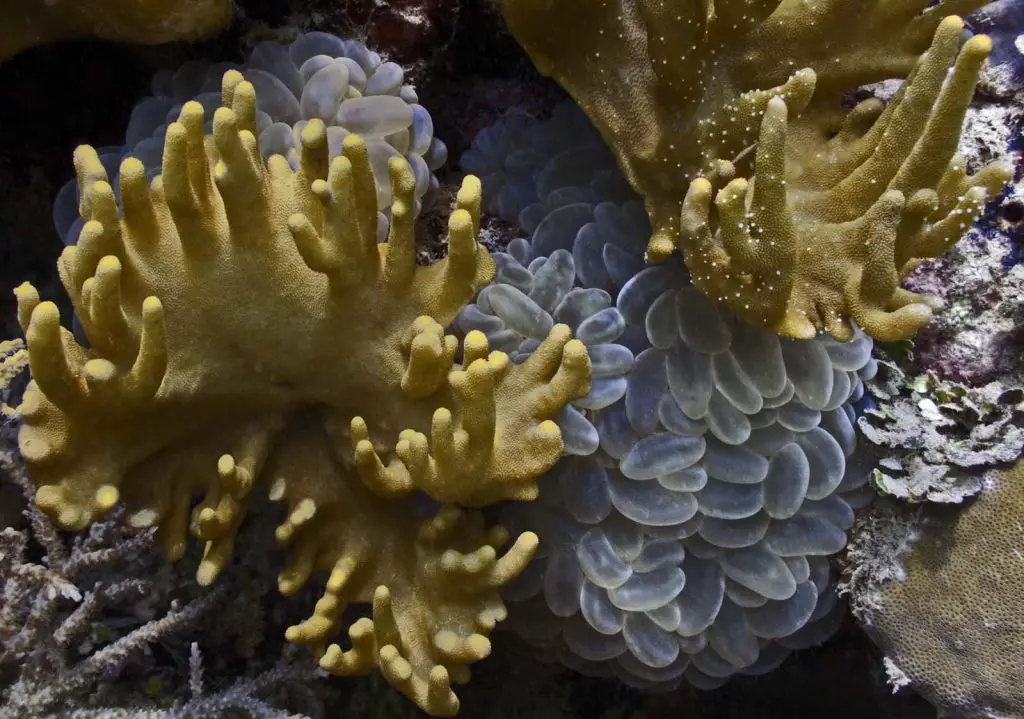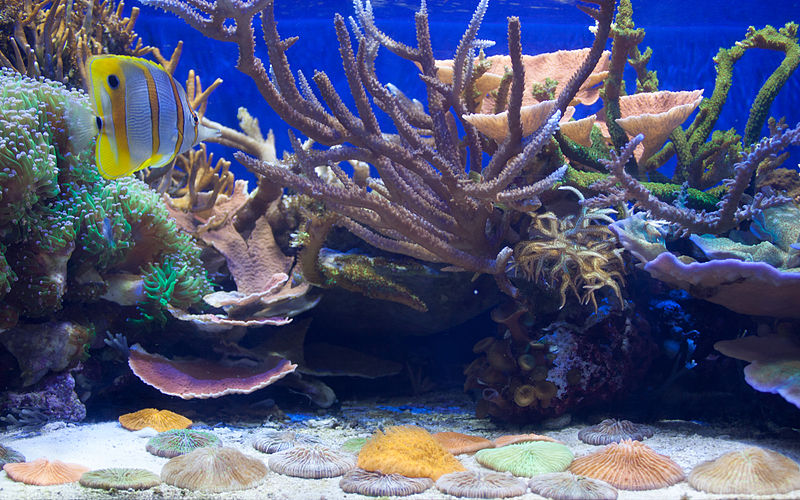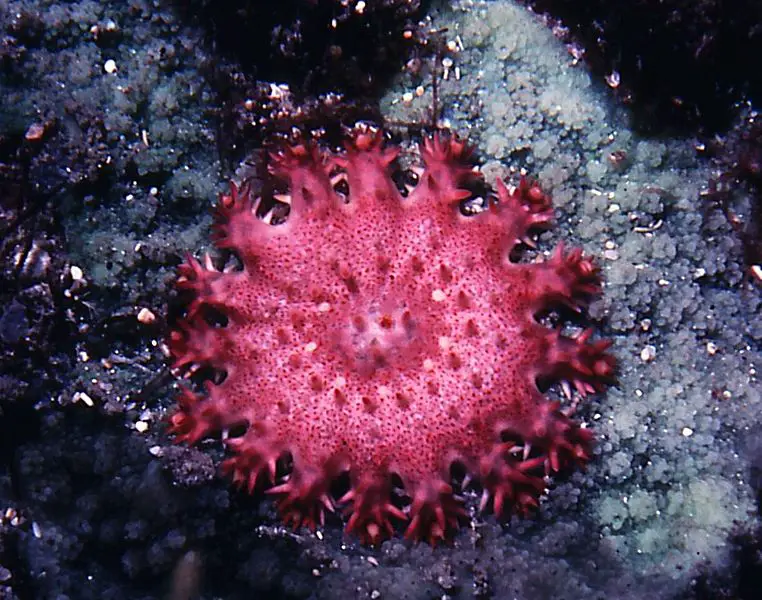Expanding your reef tank doesn’t have to be an expensive endeavor. Coral fragging is a surprisingly easy and cost-effective way to create new, beautiful corals.
Whether you’re a beginner dipping your toes into the reefkeeping world or a seasoned aquarist, this exciting technique has something for everyone.
What Are Coral Frags?
Coral frags, short for fragments, are small pieces of coral carefully cut or broken off from a larger parent colony. These fragments serve as the starting point for new coral growth.
Coral frags are akin to plant cuttings that can be cultivated to form new, independent coral colonies. Due to their reduced size, frags are particularly manageable for hobbyists looking to establish or enhance their reef aquariums.
Why Frag Corals?
Fragging corals is a sustainable method of propagation that helps protect wild coral populations by reducing the need for wild harvesting. This practice also enables reef enthusiasts to share and swap diverse coral species, further promoting genetic diversity within the hobbyist community.
Coral frags are also beneficial for recovery efforts, helping to replenish reefs that natural and human-induced events have damaged.
Coral Fragging Basics
Coral fragging is a precise method. When done correctly, this technique can help sustain reef ecosystems and enhance the biodiversity of one’s aquarium.
Coral Fragging Kit
A coral fragging kit typically comprises tools for safely cutting and handling corals. Essential items include:
- Bone cutters or coral shears: For cutting hard corals.
- Scalpels: For soft coral fragging.
- Tweezers and forceps: To handle frags delicately.
- Glue or epoxy: To affix coral frags to plugs or rock.
One must choose tools that are rust-resistant and designed specifically for marine use.
How to Frag a Coral
How to frag a coral involves several critical steps:
- Selecting a healthy donor coral: Look for robust corals that show no signs of stress.
- Removing the coral: Carefully extract the parent coral from the main aquarium if possible.
- Cutting: Use the appropriate tool from your kit to sever a fragment.
- Securing the fragment: Use glue or a rubber band to attach the coral fragment to a plug or live rock.
One must ensure the frag is placed in a low-flow area of the tank to foster recovery and growth.
Coral Fragmentation
Coral fragmentation is how a single coral polyp grows into a new colony. Understanding the growth patterns and specific species needs is fundamental for successful coral fragging.
It’s also essential to maintain optimal water parameters, as the new frags can be sensitive to changes in their environment.
Fragging Different Coral Types
When expanding your reef aquarium, fragging corals is a practical and rewarding approach. This section outlines specific methods tailored to different types of corals, focusing on those well-suited for beginners.
Coral Frags for Beginners
Coral fragging can seem daunting, but it is an accessible practice for even novice reef hobbyists. Beginners should start with hardy species that are more forgiving of the learning process.
Soft corals, like zoanthids or mushroom corals, are excellent choices due to their resiliency and straightforward fragmentation needs. It involves cutting or snapping off a piece of the coral, ensuring it has at least one polyp, and then allowing it to heal and grow separately.
How to Frag a Torch Coral
Fragging a torch coral (Euphyllia glabrescens) requires a delicate touch due to its long, fleshy polyps and sensitive skeleton structure. Follow these steps:
- Prepare your tools
- Bone cutters or a band saw
- Coral dip
- Protective gloves
- Fragging process
- Gently remove the torch coral from your display tank to a separate workspace.
- Identify a healthy branch and use the bone cutter to make a clean cut at its base.
- After cutting, dip the frag in a coral disinfectant solution to reduce the risk of infection.
- Mount the frag onto a frag plug or rock using non-toxic reef glue.
- Place the frag in a lower flow area of your tank to recover.
How to Frag Candy Cane Coral
Candy cane corals (Caulastrea furcata) are another excellent choice for new fraggers, as they are fairly sturdy and grow in distinct heads that are easy to separate. Here’s how to frag them effectively:
- What you’ll need
- A sharp pair of coral scissors or a Dremel tool
- Cyanoacrylate glue or two-part epoxy
- Coral dip for post-fragmentation treatment
- Fragging steps
- Isolate a single head of the candy cane coral with at least one mouth or polyp.
- Snip the head at the base, connecting to the colony’s central skeleton.
- Apply glue to the bottom of the frag and secure it to a frag plug or live rock.
- Utilize coral dip to clean the frag and position it in a low-to-moderate flow area in your aquarium for recovery.
Setting Up a Coral Frag Tank
Setting up a coral frag tank properly is crucial for the health and growth of your corals. This section details the purpose of such a tank, and the necessary equipment and conditions for success.
The Purpose of a Frag Tank
A frag tank, or fragmentation tank, is dedicated to the propagation of corals. By creating a controlled environment, hobbyists can grow coral frags—small pieces removed from mature corals—until they are ready for transfer into a main display tank.
This isolation reduces competition for resources and allows for closer monitoring of coral health.
Equipment and Conditions
First, one must select a high-quality aquarium tank, typically shallower than display tanks, to optimize light penetration and water circulation for the corals.
Lighting is next; corals require adequate lighting to power photosynthesis, which is essential to their survival.
A list of must-have items includes:
- Water circulation equipment: Powerheads or wave makers to mimic natural water movement.
- Heating and cooling systems: Maintain stable temperatures vital for coral metabolism.
- Filtration system: Including protein skimmers and mechanical filters to keep the water clean and nutrient levels balanced.
- Water testing kits: These kits allow you to monitor water parameters such as pH, salinity, ammonia, nitrates, and phosphates regularly.
Creating a frag tank also calls for specific water conditions to be met:
- Temperature: Between 75°F to 80°F
- Specific gravity (salinity): 1.023 to 1.025
- pH: 8.1 to 8.4
These parameters must be consistently maintained to ensure coral frags can thrive and eventually be introduced to a larger aquarium. Regular water changes and careful monitoring can help maintain these ideal conditions.
Additional Tips and Considerations
When embarking on the journey of coral fragging, reef hobbyists must consider several factors that contribute to success. These include understanding the best practices for the process, knowing where to find healthy coral frags, and preparing for potential challenges.
Best Practices for Coral Fragging
- Sterilize Equipment: To minimize the risk of infection, sterilized tools for cutting coral frags are critical.
- Adequate Lighting and Water Flow: Newly fragged corals require moderate lighting and proper water flow to encourage growth.
Coral Fragging Mistakes: How to Avoid Common Beginner Errors
Fragging corals might seem straightforward, but there are a few common pitfalls beginners can easily avoid with a little extra attention. Here are some frequent errors and how to prevent them:
- Not Dipping Frags: Always dip new coral frags in a coral disinfectant solution to eliminate pests or unwanted algae. This lowers the risk of introducing problems into your tank.
- High-Flow Placement: Freshly fragged corals are sensitive. Place them in a low-flow area of the tank to allow for undisturbed healing. Gradually increase water flow as they recover.
- Poor Handling: Corals are delicate creatures. Handle frags gently to avoid causing tissue damage. Minimize the time they are out of the water, and use clean, saltwater-rinsed tools.
- Expecting Instant Gratification: Patience is key! It takes time for coral frags to heal and start showing new growth. Don’t get discouraged if you don’t see immediate results.
Coral Frag Healing & Recovery
Observing your coral frags is crucial after the fragging process. Here’s what to look for:
- Normal Healing: Some tissue recession around the cut edge initially is normal. New tissue should form over several days to a few weeks, and the frag will begin to “encrust” onto its plug or rock.
- Signs of Trouble: If the frag is bleaching (turning white), showing significant tissue loss, or developing brown jelly disease, there is likely an issue. Address water quality problems, adjust lighting or flow, and research specific treatments for suspected diseases.
- Sometimes Things Go Wrong: Even experienced hobbyists occasionally lose frags. Don’t be discouraged – analyze what might have gone wrong and try again!
Important Note: It’s always best to research the specific needs of the coral species you are fragging, as certain types may be slightly more delicate than others.
Where to Find Coral Frags
- Reputable Dealers: Purchase coral frags from credible dealers who can provide information about the origin and care of the corals.
- Coral Swap Meets: Coral enthusiasts often trade frags at swap meets, offering a diverse selection of corals.
Conclusion
The beautiful thing about coral fragging is the community it builds. Share your successes, trade frags with fellow hobbyists, and inspire others to try this rewarding practice. Together, we can create a sustainable future for reefkeeping and a brighter one for our coral reefs.



